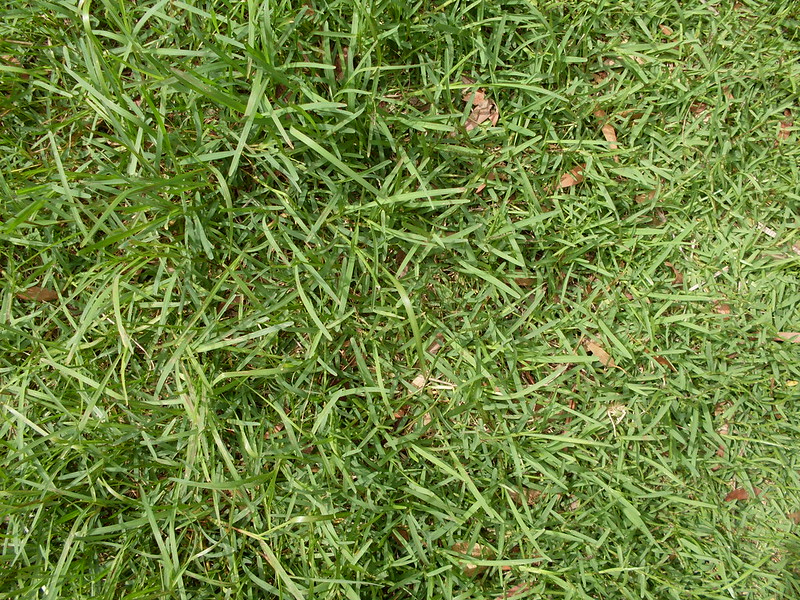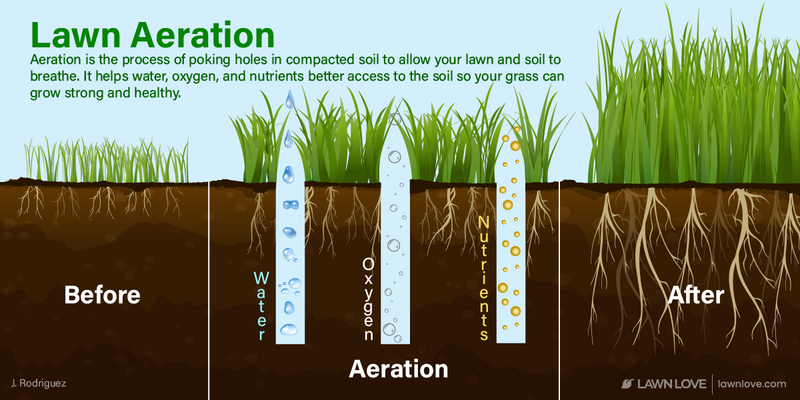
No one likes a dreary, dead lawn, especially in the summer when you want to spend time outside in the sun. Help prepare your lawn for drought ahead of time to avoid the stress and defeat that comes with water restrictions and wilting grass.
Read on to learn more about drought and how to prepare your lawn ahead of time.

What is drought?
Drought is a period of time, lasting months or years, when the environment is arid and access to water is limited. Drought can be caused by low water levels, high temps, increasing evaporation, reduced precipitation, and overuse of natural water resources.
During a drought, your municipality will likely place restrictions on water use until water levels are restored. It’s a good idea to get ahead of these restrictions by saving rainwater in a rain barrel so your lawn and garden have some access to water throughout the dry period.
How does drought impact my lawn?
Drought can cause your lawn to:
- Dull in color
- Wilt
- Become more sensitive to foot traffic
- Go dormant
- Brown
- Die
Unfortunately, drought is unpredictable. But if you live in a hot, arid climate, or your city has been implementing precautionary water restrictions, you might want to consider what you can do to be prepared. Take these steps ahead of summer, when drought most often occurs (or worsens).
Ways to prepare your lawn for drought

Plant a drought-tolerant landscape
The best way to make your lawn more durable ahead of drought is by planting drought-tolerant grasses or ground covers for your lawn. You also can add drought-tolerant and drought-resistant plants to your landscape.
- Drought-tolerant plants have a high resistance to drought, with most drought-tolerant plants able to withstand weeks to a month of drought conditions. After drought-tolerant plants begin to exhibit signs of drought stress, they will need to be irrigated to be revived.
- Drought-resistant plants are even hardier, with the ability to survive months or even years without extra irrigation.
Many native plants are drought-tolerant or resistant. There are drought-tolerant options for your turf, too. Popular drought-tolerant grass types include:
- Buffalograss
- Bahiagrass
- Zoysiagrass
- Tall fescue
- Bermudagrass
Keep in mind that some plants can take some time to establish (become mature) before becoming drought tolerant. To become drought tolerant, most plants need time to establish a deep root system, and plant roots can grow at varying rates. This establishment period can take weeks or years depending on the type of plant.
Planting drought-tolerant plants in the fall enables more time for the plants to become established in your yard ahead of summertime drought. Since every plant grows on a different timeline, take care to research ahead of time to know when your plants will reach their mature stage.

Conduct a water audit
The EPA estimates that nearly 50% of the water we use outside goes to waste thanks to poor irrigation management. By conducting a lawn water use audit, you’ll save a few bucks on your water bill and help your local environment by reducing water waste.
Conduct a water audit during your grass type’s growing season.
- Cool-season grasses grow in the fall and early spring
- Warm-season grass types grow in the summer
Water audits have proven to save between 20 to 30 gallons of water per day in a single household. Your local water utility has an interest in water conservation and may offer affordable or free sprinkler audits.
You also can conduct a water audit yourself by looking inside and outside for any leaks, checking flow restrictors, optimizing your irrigation system so it’s not wasting any water, checking sprinkler timers to ensure your lawn is being watered before 10 am, and keeping track of your water meters.
Get your soil tested
Just as too much rainfall can leach nutrients from the ground, lack of water can impact lawn fertilization and nutrient levels.
Drought can impact your regular soil testing, skewing the results such as making it seem like your soil pH is lower than it actually is.
Test your soil ahead of drought to make sure your soil is full of nutrients and your grass is as healthy as it can be. The healthier your grass is ahead of the drought, the more likely it is to survive without being significantly damaged.
How to test your soil conditions:
See how your soil is doing by
- Conducting a DIY soil test
- Sending in a lab sample
DIY soil tests are quick and cost-effective but don’t provide as much information as a more thorough lab test. Get more information about your soil by sending a sample to your local Cooperative Extension office, which will provide you with a detailed soil test report.
A soil test will give you information about your soil’s pH level, in addition to the amount of phosphorus, nitrogen, and potassium present in the soil.

Grow resilient grass
It’s hard for many plants to thrive during drought because high temperatures evaporate the water before they have a chance to absorb it through their roots. During dormancy, your grass blades can weaken, curl, and turn brown but the crown and root of the plant is still alive. That’s why it’s important to grow resilient turfgrass with a deep root system.
Many things can weaken your grass, including:
- Overwatering
- Underwatering
- Frequent watering
- Shallow roots
- Compacted soil
- Too much thatch
- Poor lawn care management overall
Thankfully, there are some ways to strengthen your lawn ahead of drought.
Mow frequently
Mowing is a great way to stimulate your turf and help encourage dense, deep-rooted grass. Mowing frequently encourages your grass to spread, causing a thicker turf. Mow weekly ahead of a drought, and mow less frequently during an active drought season.
Be sure to use sharp mower blades — a dull blade can cause damage to and weaken your grass.
Water infrequently and deeply
Water your grass when it begins wilting or showing other signs of drought stress, like leaves are curling or grass is slow to recover after being stepped on. This can be weekly or bi-weekly, depending on your grass type.
Be sure to water in the morning, before 10 a.m. This allows your grass to soak in all the water before the heat of the day. If you water too late in the day, the sun will evaporate all the water and dry out the soil, wasting precious water and preventing your lawn from getting hydrated.
Water infrequently and deeply to encourage deeper roots — the roots will grow toward the water soaking down into the ground. Aim for 1-½ inches of water a week, which should soak 6 to 8 inches deep in the soil.
Mow higher
Stay on top of your regular mowing routine, but consider cutting the grass high, especially ahead of drought. Tall grass helps keep the soil cool and shaded and can help retain moisture during hot, sunny weather.
Gradually increase the mowing height each time you mow until it’s at the higher end of the recommended mowing height for your grass type.
| Warm-Season Grass | Recommended Height | Cool-Season Grass | Recommended Height |
| Bahiagrass | 3-4 inches | Fine Fescue | 1.5-3 inches |
| Bermudagrass | 1-2 inches | Kentucky bluegrass | 2-3 inches |
| Buffalograss | 2-4 inches | Perennial ryegrass | 2-3 inches |
| Carpetgrass | 1-2 inches | Tall Fescue | 2-4 inches |
| Centipedegrass | 1.2-2 inches | ||
| St. Augustinegrass | 2.5-4 inches | ||
| Zoysiagrass | 1-2.5 inches |

Aerate ahead of time
Before the weather heats up and your lawn begins to feel stressed out, aerate your lawn. Aeration helps relieve compacted soil and helps water, oxygen, and nutrients seep into the ground. Aerating your lawn helps keep it healthy, strong, and drought-tolerant.
Core aeration is recommended ahead of drought because it helps reduce soil compaction and allows more water, oxygen, and nutrients to flow into the soil, compared with other aeration methods. Rent or buy a core or plug aerator and run it across your yard to remove plugs of soil.
When to aerate:
If you have cool-season grass, it’s a good idea to aerate it in the fall. Warm-season grasses should be aerated in the spring.

Dethatch if needed
Thatch is a layer in between your growing grass and the soil, made up of dead grass that can’t decompose fast enough to keep up with the turf’s growth rate.
Thatch can block water from being fully absorbed into the ground, making drought conditions even worse for your lawn. Dethatching your lawn can help conserve water and reduce runoff while helping your grass grow green and healthy.
Dethatch your lawn using a thatch rake, electric dethatcher, power rake, or vertical mower. These tools and machines will help you penetrate the ground and pull up the thatch.
When to dethatch:
Dethatch warm-season lawn grasses in the spring, and cool-season grass types in the fall. Start planning to dethatch when the thatch layer exceeds a half-inch thick.

Add mulch to your landscape
Mulch not only adds a nice decorative touch to your garden beds, but it also has many other benefits.
Mulch helps with drought by regulating soil temperature, and keeping your plant roots cool even as the summer sun beats down. Mulch also can retain moisture after you water your plants, reducing water waste.
Ahead of a drought, mulch grass clippings into your lawn when you mow to keep your lawn hydrated, too.
FAQ about preparing your lawn for drought
Here are some ways to help maintain your lawn during a drought:
— Keep the grass long
— Remove weeds by hand
— Add mulch to conserve water and regulate temperatures
— Stay off the grass
— Keep lawn care equipment maintained
It’s not uncommon for your lawn to look wilted and dull after a dry spell. Here are some ways to pep up your turf and grow a nice green lawn after a drought:
— Avoid overwatering
— Reseed with new grass seed
— Resod dead patches
— Aerate if soil is compacted
— Get a soil test done
— Fertilize if nutrients are low
Dry weather and drought don’t just wreak havoc on your lawn, they can greatly impact your local community. Avoid drought, dormancy, and other disasters by committing to water conservation year-round.
— Waste less water around the house
— Repair leaks as soon as you see them
— Recycle water and collecting rainwater
— Buy energy and water-efficient appliances
— Avoid installing ornamental water features
— Opt for early morning watering

Keep an eye on the climate
While there’s no way to predict exactly when a drought will strike, or how long it will last, you can still check current drought conditions in your area.
Prepare ahead of the summer months when temperatures are high and the ground is more likely to dry out. Decreased precipitation in the spring also can precede a drought, so keep an eye on the weather forecasts.
Is the summer heat exhausting you? Stay inside and let a local Lawn Love pro take care of your lawn care needs.
Main photo credit: Zen Chung | Pexels
